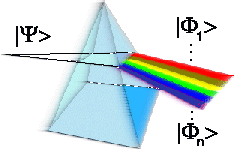Vacuum 63, 127 (2001)
M. A. Zauska-Kotura, A. Usakowskia, S. Krukowski, Z. Romanowskic and . A. Turski
We present two methods of the Monte Carlo analysis of the chemical diffusion processes on solid surfaces. First method is based on the analysis of the decay of sinusoidal adsorbate density perturbations; the second one uses the Boltzmann–Matano procedure applied to the step-like density profile. The usefulness of both these methods is shown on extraction of the chemical diffusion coefficient from the numerical results.We have applied our two methods to various realizations of 2D lattice gas systems, simulating diffusion of adsorbate on surfaces of crystal having hexagonal symmetry of adsorption sites. In particular we were interested in the dependence of the diffusion process on strength and sign of the interactions of the jumping adatom at its activated state. We have compared systems with the same equilibrium properties (same ordered and disordered phase structure) and different interaction-dependent barriers for attractive and repulsive forces.
Jun 28, 2001
Jun 23, 2001
On the extinction paradox
Władysław Żakowicz
The extinction paradox, the difference of classical and quantum scattering cross-sections for the scattering of particles by a rigid sphere (σQ=2πa2=2σC for ka>>1), is analyzed in a simpler 2D model of a rigid cylindrical potential. Rigorous solutions of the Schrödinger equation for particle beams, including also finite width beams, are derived and employed in the description of the scattering process. The scattering particle fluxes, with a thorough treatment of the forward directions, are being studied. It is pointed out that for wide beams (w>>a) the scattered flux can reach the value determined by the quantum theory, provided that it is measured at distances R>>waλ. Moderately narrow beams, but also that the transverse width of beams of de Broglie's waves is small.
Acta Phys. Polon. A 101, 369 (2002)
The extinction paradox, the difference of classical and quantum scattering cross-sections for the scattering of particles by a rigid sphere (σQ=2πa2=2σC for ka>>1), is analyzed in a simpler 2D model of a rigid cylindrical potential. Rigorous solutions of the Schrödinger equation for particle beams, including also finite width beams, are derived and employed in the description of the scattering process. The scattering particle fluxes, with a thorough treatment of the forward directions, are being studied. It is pointed out that for wide beams (w>>a) the scattered flux can reach the value determined by the quantum theory, provided that it is measured at distances R>>waλ. Moderately narrow beams, but also that the transverse width of beams of de Broglie's waves is small.
Acta Phys. Polon. A 101, 369 (2002)
Subscribe to:
Comments (Atom)
